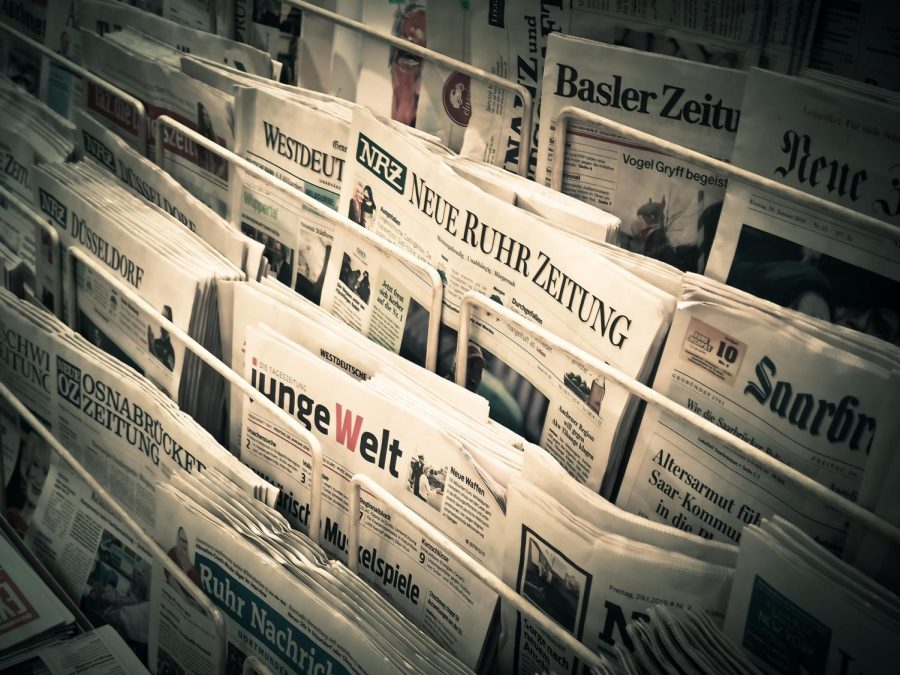Downsides of 24 Hour News
News in large quantities risks sacrificing quality for quantity
April 12, 2023
Fun fact about the Corral: a surprise part of my job as one of the editors is to create the schedule for the deadlines. Like English class, we have outlines, rough drafts and final drafts, but with slightly different ways of looking at it. Either way, making deadlines was one of the worst parts of my position early on in the job. As in, I had to make all of the deadlines for the entire school year within the first two weeks of school so we would know what we were doing when. I budgeted between five to seven weeks for each turnaround, with less time in a shorter second semester, and more time at the beginning when people were still learning. This doesn’t sound very difficult until you have to factor in the AOE schedule, days off, half days and early releases. From this experience, I have a newfound appreciation for all teachers and those who advocate for slow journalism.
Slow journalism is a countercultural perspective that reports on the news do not have to happen all the time. Instead of focusing on massive quantity all the time, slow journalism advocates for quality over a long period of time. Such outlets take longer to report, but use that time to research and properly report in depth investigations.
The increase in the speed of media and media consumption can be traced back to 24 hour news cycles through 24 hour cable networks. These arose in the late 90s, most prominently in 1996 when MSNBC and FOX News entered cable news to join CNN.
Some of this background is covered in social studies classes. John Meyer teaches AP U.S. Government and Comparative Politics, and lessons on media are incorporated into the AP curriculum.
Before 24 hour networks, “We expected a recitation of what has happened,” Meyer said. “Now, we expect to be told what to do with that, or what that means. So rather than simply having the facts presented to us, researched facts subject to journalistic ethics, we now have an individual or a group of people’s perspectives on things that have happened or things that are speculated to be happening.”
The speed and sheer volume of news available created competition at a larger scale than it had been in the past, because instead of a paper a day (except Sunday) from whichever papers someone decided to subscribe to, the sky became the limit. To fill that 24 hours and get views, channels began to resort to interviews, talk shows, tabloid and celebrity news because that is faster to receive, digest and capture attention. The importance of views comes in for competition between media organizations for audiences.
Competition also increased because of advancements in technology such that anyone with a cell phone and internet connection can open a Twitter account.
“I think that the barriers to entry in media marketing ceased to exist in a large way,” Meyer said. “There was no legal mechanism to try to provide computing, electronic content, you couldn’t open up a television channel, because you’re legally barred from doing so. Other technologies didn’t exist, and newspapers, you could think, ‘we could compete with the Washington Post,’ except that there’s a massive barrier to entry. But 20 years ago, it became people with a blog, and now, people with a Twitter handle, or people with a podcast that can be done at almost no cost, and can be broadcast to anyone in the world who wants to listen to it.
Although breaking down barriers to access means there are more people reporting from more perspectives than any one person has ever had available before, there also exists just as much more room for inaccuracies.
While there are plenty of occurrences around the world to report on, it is the 24 hour cycle, along with the promise of current, on the minute updates that hinders professional journalists. When you sit down to write an essay, that essay is probably better if you took a few days to think and plan it out before writing it, then taking the time to revise. By locking ourselves into a tighter time frame, we often sacrifice quality for the sake of quantity.
Additionally, the information that is most simple to convey and gets the most attention is disaster. Humans love a train wreck, and the more shock value, the better. Putting ideas out for shock value before thinking whether we should is not very ethical.
By introducing ethics into the conversation, the quick version of journalistic ethics can be summarized by the Society of Professional Journalists (SPJ) Code of Ethics: Seek truth and report it, minimize harm, act independently and be accountable and transparent.
Sensationalized media violates all four points, because exaggeration blows the truth out of proportion, harms those involved in the story and the readers with false information, is often written for the purpose of getting views and often presents sensationalized, opinionated stories as news.
In America, the polarization of politics is not a new topic of conversation. The division between left and right has only widened in the last few years, and this method of presenting news has only incited rage on both sides. Both left and right media outlets are guilty of sensationalizing news in order to make the idea of a middle ground a lost relic of the past.
Another effect of sensationalized media in vast quantities on audiences is news overload. There’s a lot of pressure now to stay on top of the news and always know what is happening out in the world, and that kind of pressure to know everything, in all parts of the world, in addition to all sides of the issue and how to think about the topic results in news overload. As a reaction to this kind of pressure, many people retreat and resort to smaller pieces of manageable news that is easier to take in – often, in line with their own political affiliation. Here, news overload causes tunnel vision, not helped by intricate social media algorithms that throw more and more sensationalized topics at unsuspecting scrollers. Ideally, we’d all only read well researched and reviewed articles, but the pace of everyday life does not allow for that kind of time.
While some networks claim that the benefits of cable news include an increased global reach, the damage of an overwhelming amount of news in all formats goes deeper into the minds of audiences. The stress from a constant barrage of negative news has been taking a toll on the mental health of Americans. According to the American Psychological Association (APA), more than half of Americans say the news causes them stress in a study done in 2017. That number has probably increased since COVID-19 and all of the political tension that came with it. That same study reported that 70% of Americans believe the media “blows things out of proportion” which raises the question of who to trust. The contradictory pressure to stay informed and stay mentally well often creates even more stress from the news, which isn’t helped by the depressing nature of most headlines. Dips in mental health have been linked to substance abuse and other harmful coping strategies.
In order to prevent this, set time and source limits on your news intake, including those on social media. While checking if your sources are verified, this paper and its corresponding website is included in that category.



